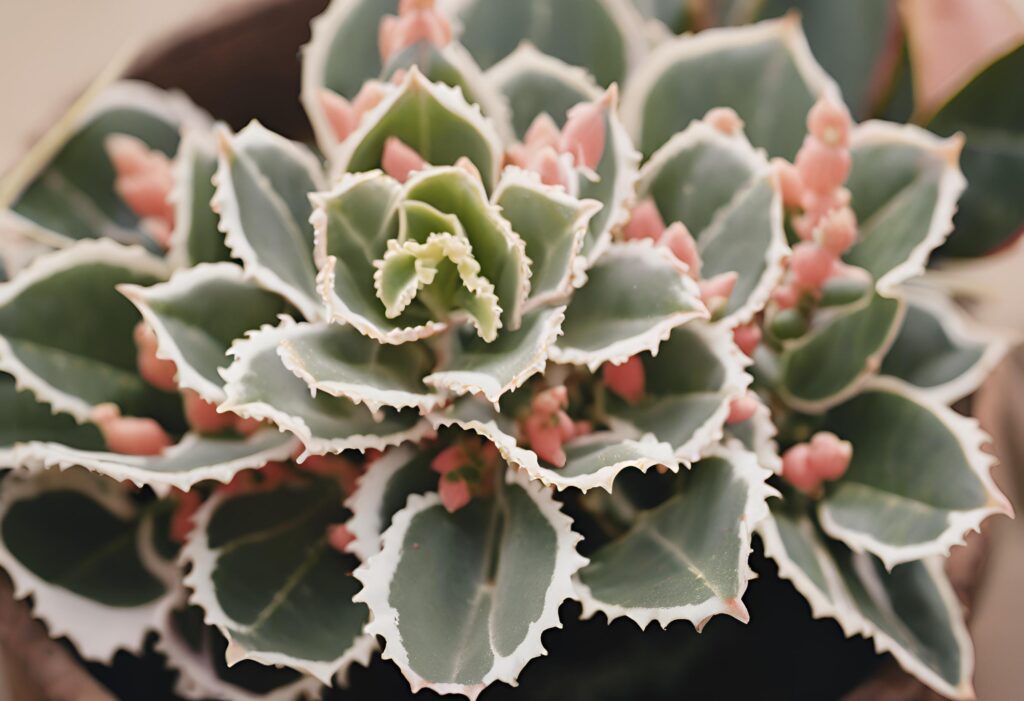The kalanchoe plant is a popular indoor plant admired by plant enthusiasts. They are famous for their vibrant bloom, striking looks, and easygoing aspects. The kalanchoe plant belongs to the Crassulaceae family, a species of flowering plant. There are around 100 species of the kalanchoe plant but the kalanchoe blossfeldiana is the most popular one. This species blooms a small tabular cluster of flowers(pink, red, white, and yellow.) and has thick fleshy leaves.
This unique plant is from the tropical region of Africa and it thrives in bright, indirect sunlight. It has a small structure that prefers dry soil over moist soil. They will give your home or office space a green pop, elevating your interior. With proper care, it will bloom flowers for a decade. But it is important to plant and care in the right way.
The planting process of the kalanchoe plant:

Pot selection:
For this plant, a pot with a proper drainage hole is ideal. However, the material is not a problem plastic, microfiber, terracotta, or clay can be used. But the drainage system must be perfect because the kalanchoe plants excel in less moist soil. I prefer terracotta or clay for its ability to wick away moisture.
The right potting blend:
Since it can withstand dry soil and a period of drought, making a well-drainage potting blend is ideal. Mixing a cactus or succulent is perfect for this plant but a blend with perlite or sand mixed with standard soil is another way. The potting mix should be 50% cactus or succulent with 50% soil or 40% pelite or sand with 60% soil.
Planting process:
Firstly create a layer of small rocks or broken pottery at the bottom, then add your potting blend and fill up with standard soil. Remove the plant from the nursery pot and place it gently and again add your potting mix on top. Finally water it in small quantities and let it settle down. It is better to perform this process in the shade instead of in bright sunlight.
Kalanchoe plant care:
Light requirement:
The kalanchoe plant requires bright, indirect sunlight. In home or office space placing the plant on a south-facing window treatment is ideal. Kalanchoe plants can be kept in direct sunlight but with partial shading. It helps the plant not get leggy.
Watering:
As they are drought-tolerant and like to be in dry conditions. Watering requires less effort; once in 1-2 weeks is optimal. You have to ensure that the top inch of the soil is dry out then water again. In winter it is recommended to water infrequently or else it may lead to root rot.

Temperature:
The kalanchoe plant thrives at 60-80 Fahrenheit and is not cold-tolerant. They can’t survive below 50 Fahrenheit. During the winter, I tend to create a space around the window treatment.
Humidity:
Generally, it does well in low to mid-humid conditions. The indoor conditions suit its nature. A humidifier is not required.
Fertilizer:
The growth of the kalanchoe plants takes place during the spring and summer. Therefore using a balanced, water-soluble fertilizer during that time is optimal. Once in the month of spring fertilizers should be fed. During other seasons, it is recommended to avoid fertilizers.
Pruning:
Removing dead flowers and leaves will promote a better appearance and new blooms. Pinching the stem will increase robust blooms and stability. These easy steps can help your plant to stay healthy, new flowers, and leaves.
Propagation and Growth of Kalanchoe Plant:

The kalanchoe plants are slow-growing and take 2-5 years to reach maturity. Various species of this plant require different duration to reach maturity. Flaming Katy can reach 12 inches; cathedral bells, and velvet-leaf reach 5-6 feet. The pladdy plant can reach 2 feet at maturity. So, be patient about the kalanchoe plant growth process. To get the best result repotting is essential. Annually repot your kalanchoe plant by increasing the pot one size larger. This will enhance the plant’s growth and its overall health.
The mother plant will thrive when the offset is pruned and propagated.
- Firstly, cut a part of the stem a few inches from the mother plant.
- Let it dry out for a couple of days and calloused over.
- The calloused cut end is dipped in rooting hormone and then planted in the soil blend for the succulents.
- Keep the cutting in a bright, indirect light until the root develops. This might take about a few weeks. After that, you can care for it as a normal kalanchoe plant.
Adding this to your chore chart lets you easily remember to perform it.
Common issue with the kalanchoe plant:

The kalanchoe plants are easy to maintain and care but some common issues come along the way. Solving them is necessary for the plant’s health.
Overwatering and Underwatering:
Overwatering can cause yellow leaves, root rot, and soggyness. Ensure the pot has good drainage and water after the top portion of the soil is dry.
Sometimes underwatering can be an issue. The leaves became wrinkled, crispy, and dry. Water deeply but infrequently and during hot conditions monitoring is a must option.
Pest:
Household pests like mealybugs, spider mites, and aphids can cause distorted foliage, and sticky residue on leaves. The plant enthusiasts suggest using neem oil or insecticide soap to prevent the pests. It will improve the plant’s health in the long run.
Light issue:
Lack of light can cause harm to the overall health of the kalanchoe plant because it wants bright, indirect sunlight. Keeping it near the window treatment is a deal but placing it in a garden with partial shade is a wise option.
Leaf drops:
This occurs when the plants surrounding change. Temperature, humidity, and light condition changes in these factors can cause premature drop of leaves.
How to help the kalanchoe plant bloom:

The kalanchoe plant needs to intake 6-8 hours of daily sunlight. Since it is a short-day plant; Keeping it in 12-14 hours in a dark place is ideal. In spring the outburst of bloom occurs for several weeks. But by light control, it will bloom the whole year. It said that kalanchoe plants bloom often when kept outdoors. Bright, indirect light is ideal but direct light can burn the leaves and hinder the plant’s health.
Environment control and care will improve the chances for more bloom. It is important to feed a well-balanced water-soluble fertilizer and phosphorus can be handy. Well, another thing is pruning the old bloom and making room for the new one. This is an effective way to encourage more bloom for the kalanchoe plant.
Is the kalanchoe plant pet-friendly?
In simple terms, this plant is not pet-friendly. The kalanchoe plant is friendly for humans but the toxins will cause problems for your pets. By chewing it they might face vomiting and abdominal pain. Monitoring and placing it in a higher place is an option.
Types of kalanchoe plant:
Kalanchoe hildebrandtii: This one is a rare piece with curly, wavey leaves and metallic-gray foliage.
Kalanchoe blossfeldiana: It is a common plant for indoor and home gardens. It provides bright and colorful blooms.
Kalanchoe tomentosa: It has furry, silvery leaves with reddish edges for this reason it is called a “Panda Plant”.
Kalanchoe fedtschenkoi: It’s other name is “Lavender Scallops” or “Flapjack Plant”. It has scalloped leaves with a purple tinge and blooms small, tubular flowers.
Kalanchoe beharensis: It has velvety leaves with a rough texture and has another name called “Elephant Ear Plant”.
Kalanchoe luciae: The leaves of this species can turn red and orange in bright light. It is commonly known as the “Paddle Plant”.
Kalanchoe marnieriana: It is called “Copper Spoon” and its paddle-shaped leaves with reddish, coppery tint make this species unique.
Kalanchoe daigremontiana: This is famously known as the “Chandelier Plant” or “Mother of Thousands”.
Conclusion
The kalanchoe plant is ideal for indoor plantation and its easy maintenance is a key factor. The handy nature will give longevity and the beautiful outlook will increase your home ambiance. Overall planting and caring in the right way will provide a colorful pop to your home space. I hope you enjoy this blog and until next time stay healthy.
Related Topic:


Leave a Reply